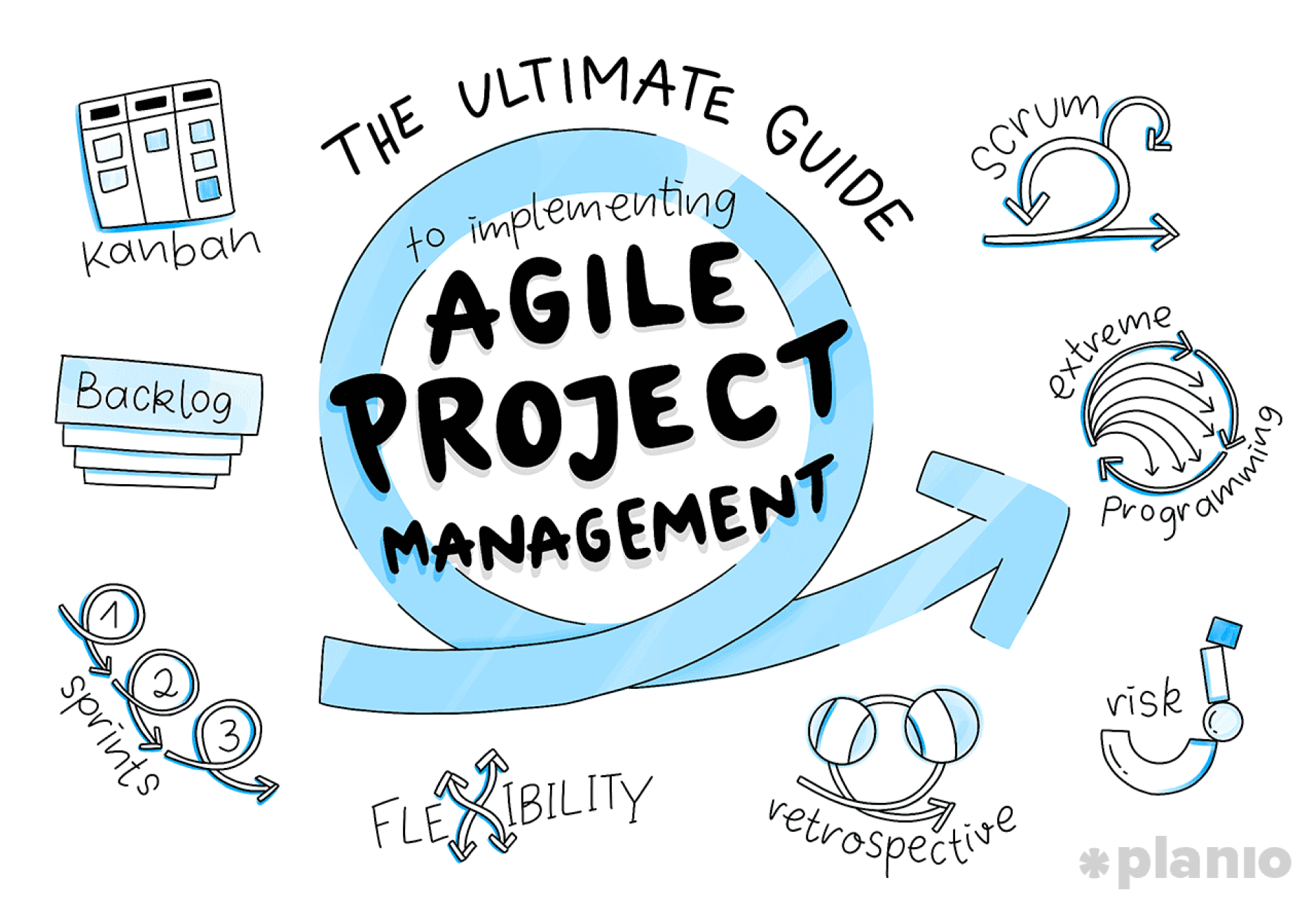So you’re about to manage a complex project? There’s a whole bunch of work that needs to be done, but don’t panic! As a project manager, you will be responsible for planning, monitoring, managing the budget, executing, verifying the quality and releasing the final project on time. Thankfully, there are many project management methodologies that can make your (and your team’s too) work easier and much more efficient!
In this article, I would like to concentrate on the two most popular Agile methodologies – Scrum – which have taken the software development world by storm in recent years. These days, you will hardly find a software house that doesn’t adopt these two frameworks for project management. What are they all about? Read on and learn everything you need to know about Scrum!
What exactly is Agile methodology in project management?
Today companies no longer work on a single project without testing it at all stages of the development process. It just doesn’t pay off! Why not?Today companies no longer work on a single project without testing it at all stages of the development process. It just doesn’t pay off! Why not?
Just imagine: your whole team works for several months on, let’s say, developing a mobile app, which you only test and evaluate at the very end once the entire work of your backend and frontend developers, designers and copywriters is already finished. What if only then you realise that your product no longer responds to market requirements and user needs? You’d then need to introduce subsequent iterations of the whole project, which consumes much time, money and energy.

Agile methodology is thus a great solution that significantly improves the workflow and easy implementation of changes at every stage. The key principle behind Agile is to break down one “big” and complex project into several smaller items (or features) and release them one after another. Here, both development and testing are two concurrent activities, making it easier to continuously validate the project and introduce all the necessary improvements.
What’s interesting is that while for many years Agile prevailed in IT and software development companies, this methodology turned out to be so effective that it is nowadays used in many other fields such as marketing, sales, HR or operations. According to the State of Agile Report prepared by Verison One, in 2020 95% of technology companies and software houses were practising various Agile methods.
Scrum framework: why is it so awesome?
Many people tend to mix up two concepts that, although they seem to be quite similar, are not synonymous – these are Agile and Scrum. In a nutshell, Agile is an umbrella term that indicates all the methods and approaches specified in the Agile Manifesto, while Scrum is in fact one of those methods. It’s as simple as that!
Scrum is a project management framework, applied mainly to building complex products where the development process takes at least several months. It relies, above all, on transparency, ongoing communication between all team members and collective responsibility. This strategy facilitates delivering the final version of the project that satisfies the needs of the target audience and responds to current market demands.
Even though Scrum has become a leading framework especially in recent years, it’s actually nothing new. Let’s go back to 1986 when the Harvard Business Review published the article The New Product Development Game. There, the authors described a management approach employed by companies like Honda or Canon that led to their success. Then, in 1993, these concepts inspired Jeff Sutherland and the Easel Corporation team to establish a team-based process called Scrum.
Roles & responsibilities in a Scrum Team
Scrum is a project management framework, applied mainly to building complex products where the development process takes at least several months. It relies, above all, on transparency, ongoing communication between all team members and collective responsibility. This strategy facilitates delivering the final version of the project that satisfies the needs of the target audience and responds to current market demands.
Even though Scrum has become a leading framework especially in recent years, it’s actually nothing new. Let’s go back to 1986 when the Harvard Business Review published the article The New Product Development Game. There, the authors described a management approach employed by companies like Honda or Canon that led to their success. Then, in 1993, these concepts inspired Jeff Sutherland and the Easel Corporation team to establish a team-based process called Scrum.
And in the next blog post, we will provide more information about framework Scrum, stay tuned!



